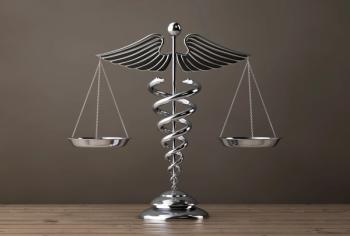
Pharmacy Practice in Focus: Health Systems
- January 2013
- Volume 2
- Issue 1
Perioperative Management of the Surgical Patient on Chronic Steroid Therapy
Case
J H is a 45-year-old woman scheduled to undergo an exploratory laparotomy with liver laceration repair and splenectomy following a motor vehicle collision. She has been taking 20 mg prednisone daily for the past 5 years for rheumatoid arthritis, and the surgical team inquires about the need for supplemental perioperative steroids.
Answer
Patients undergoing a surgical procedure or responding to stress, trauma, or an acute illness will exhibit an increase in adrenal cortisol production up to 6-fold normal levels. However, in patients on chronic exogenous steroid therapy, atrophy of the hypothalamicpituitary-adrenal (HPA) axis may occur through feedback inhibition, leading to an inability to respond to stress. It has historically been believed that patients receiving long-term corticosteroids require supplemental, perioperative doses, and that failure to provide such coverage in secondary adrenal insufficiency may lead to an adrenal crisis characterized by hypotension and cardiovascular collapse. Currently, however, minimal evidence exists regarding optimal type, dose, and duration of supplemental steroids, if any, that should be recommended perioperatively. Given the known detrimental side effects of corticosteroids, including hyperglycemia, delayed wound healing, water retention, hypertension, and neuropsychiatric complications, use of the lowest possible doses is warranted.
Consideration of the need for supplemental doses depends not only on the magnitude of the surgical procedure performed, but also on the patient’s current steroid regimen. Normal cortisol production on average is 15 to 20 mg/day, which can increase to 50 mg/day in response to minor procedures and 75 to 150 mg/ day for moderate/major surgery. The onset of adrenal suppression can occur as early as 1 week after commencing therapy, and usually requires doses of 10 mg of prednisone equivalent or greater.
Therefore, patients receiving “physiologic replacement” doses (<10 mg/ day) do not need additional steroids perioperatively beyond their standard regimen. Patients receiving doses exceeding the normal expected stress response for their surgery (>150 mg/ day of hydrocortisone equivalent for moderate/major surgery, or >50 mg/ day of hydrocortisone equivalent for minor surgery) also do not need additional coverage beyond their current therapy, because acute immunosuppressive doses are more than sufficient to maintain cardiovascular stability during the operation.
For the remaining group of patients, current evidence in the literature, although scant, suggests that the combination of the patient’s regimen, along with endogenous cortisol production around the time of surgery, is sufficient to preclude additional coverage. However, if supplemental steroids are warranted, the combination of the patient’s usual dose with the additional corticosteroid should not exceed the maximum expected cortisol production for the severity of that particular surgical procedure. For patients unable to take oral steroids perioperatively, divided doses of hydrocortisone every 6 to 8 hours is appropriate.
Generally, cortisol levels return to baseline within 48 to 72 hours following the procedure. Thus, in patients receiving supplemental dosing, an additional postoperative 24 hours of coverage for moderate surgery and 48 to 72 hours for major surgery may be reasonable. Recovery of normal adrenal function following steroid discontinuation has been documented to require as short as a few days up to 9 months, with the time course of recovery a function of the dose and duration of prior therapy. It has been suggested that patients who discontinued their steroids within 3 months of surgery should be assumed to have adrenal suppression, and be treated as such, whereas the remaining patients should simply have additional monitoring for hemodynamic compromise.
In the case of JH, a reasonable recommendation would be either administering only her home prednisone dose of 20 mg/day, or if supplementation is needed, hydrocortisone 50 mg IV q8h could be used instead, and continued for 48 to 72 hours, at which point her home regimen could be resumed.
Roxana Dumitru, PharmD, BCPS, is a clinical specialist-trauma/surgery at the Harborview Medical Center in Seattle, Washington.
Articles in this issue
almost 13 years ago
We Are the Worldalmost 13 years ago
Acute Decompensated Heart Failure Management Strategiesalmost 13 years ago
Lead Toxicity in a Pediatric Patientalmost 13 years ago
Liposomal Bupivacaine (Exparel)Newsletter
Stay informed on drug updates, treatment guidelines, and pharmacy practice trends—subscribe to Pharmacy Times for weekly clinical insights.

















































































































































































































